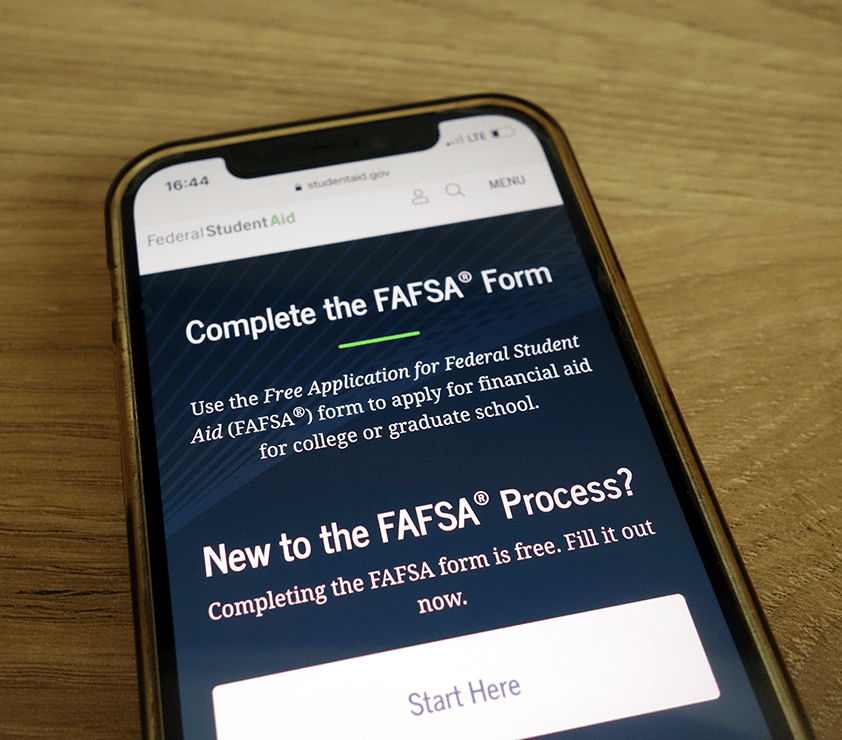September is National College Savings Month. What better way to celebrate than educating others on best practices when it comes to college savings options and paying for college? Paying for college can seem like a daunting topic to tackle. But if you use the right strategies, it can be easier than you think.
1. Pay for college ahead of time with a 529 plan
As we’ve discussed previously, 529 plans are a great option for paying for college when you start saving early. A 529 plan is an investment account that offers tax benefits when used to pay for qualified education expenses. 529 plans are used to save for future education costs, such as a college fund.
With a 529 plan, your investment grows on a tax-deferred basis. It can be withdrawn tax-free if the money is used to pay for college or other education expenses. College savings don’t necessarily have to be used to pay for tuition only. The 529 plan also covers the cost of textbooks, technology and rent as long as it applies to what’s needed to attend school.
2. Complete your FAFSA
The Free Application for Federal Student Aid, better known as the FAFSA, is the most important factor to complete when estimating how much you will pay for college. Many colleges use your FAFSA information to determine your eligibility for state and school aid. Some private financial aid providers, like scholarship organizations, also use FAFSA information to determine your eligibility.
In order to apply for federal student aid, such as federal grants, work-study and federal student loans, you will need to complete the FAFSA. Completing the FAFSA gives you access to the largest source of financial aid to pay for college.

The FASFA opens on October 1 of every year for the next academic school year. It is important to mark this date and complete the FAFSA form in a timely manner to ensure the form is recorded. A missed FAFSA could cause you to miss out on additional aid.
3. Apply for grants and scholarships
We can’t say it enough – apply for scholarships! An estimated $100 million in scholarships go unused each year due to a lack of applicants, according to Forbes . Private scholarships are one of the easiest ways to help offset education expenses and minimize potential debt. It is like being handed “free money” that does not need to be repaid.
However, keep in mind that many scholarships require that you remain in good academic standing. They often have to be reapplied for throughout your academic career, usually around the time of winter break, as well.
Grants are another great way to pay for college and are based on financial need. Like scholarships, grants are a form of gift aid that doesn’t need to be repaid. You should always prioritize this type of cash for college over other options, especially student loans.
4. Consider a college with less costs for you
We understand that almost everyone has a dream school, but keep in mind that public four-year colleges cost less. Your scholarships and other aid money will go further at a four-year state school.
Community college is also a great option for saving even more money while completing your education. Community colleges also have other benefits such as flexible classes, personalized attention and transfer agreements. Transfer agreements allow you to bring your credits with you to a four-year school. You can pick up exactly where you left off in pursuing a Bachelor’s Degree without the high college costs.
Community college benefits
- Flexible classes
- Personalized attention
- Transfer agreements
- College savings option
When researching schools, be sure to review all college costs including tuition and fees, room and board, meal plans, and class expenses (technology, textbooks, etc.). In the end, attending a big-name school will matter less than where you stand financially when you graduate.
5. Get to know the Federal Student Loan Simulator
One great feature of the Federal Student Aid website is the Loan Simulator . The Loan Simulator will help you calculate federal student loan payments based on what you borrow. It will also help you choose a loan repayment option that best meets your needs and goals.
Borrowed loans can add up fast, but this tool will allow you to forecast potential repayment amount and prevent overborrowing. You can also use it to make other decisions like whether to consolidate your student loans.
6. Look into Parent PLUS Loans for financial aid
A student’s ability to borrow federal student loans may run out before all college costs are covered for the year. This is especially true if the student moves off campus and has expenses outside of on-campus living. This is when the Parent PLUS Loans can be of use.
Unlike federal student loans, Parent PLUS Loans are expected to be paid back by the parents of the student. The parents will need to go through a credit check with the government to qualify, but once approved will be able to help cover the cost of college. After the student finishes school, they might be able to refinance the Parent PLUS Loans in their name to take over the responsibility.

Keep in mind that Parent PLUS Loans are only given to parents of dependent children and graduate students. It is important to review all out-of-pocket college costs for your student to ensure they have used what they can to pay off their own expenses, first.
7. Consider private loans to cover college costs
Sometimes utilizing private student loans for financial aid can bridge a college funding gap after all other options have been used. However, it’s important to know that you will have to meet credit requirements set by the private lender. You might even need to find a cosigner to qualify.
Make sure you carefully consider which private loans will be apart of your plan to pay for college. Be aware that these loans don’t come with all the same protections as federal student loans, especially benefits such as income-driven repayment. Also keep in mind that private student loans have variable interest rates, while all federal loans are fixed-rate.
8. Get a job or work-study to cover college costs
A part-time job can be a great way to help make up the difference in financial aid when attending college. Many students work part-time to pay for some of their college costs, such as utility bills for off-campus apartments. You can also work extra hours over the summer to earn money to put toward the next semester.
Some students may be placed with a federal work-study to assist with financial aid and other college costs. Work-studies are basically part-time jobs that can be on or off campus. The college or university will typically place students with a particular financial need with a work-study to help provide additional financial assistance.
9. Seek tuition reimbursement or loan forgiveness
After you graduate, see if your employer will help pay for your education. Companies such as Chipotle, Disney and Starbucks offer tuition reimbursement to their employees. Tuition reimbursement is a way to ensure you don’t have to pay for college all on your own. You can earn money and get reimbursed for some of your tuition bills.
There are also many types of loan forgiveness offered by the government that depend on where you work and what your financial status is. Check the Federal Student Aid website to see if any of the loan forgiveness plans apply to you.
There are many college savings options
As we wrap this up, you may still be wondering “how can I pay for college without debt?” The answer is that there is no one perfect way to pay your way through college. Instead, there are many different avenues that can be utilized to cover college costs no matter what your finances look like. From saving with a 529 plan to taking out private student loans, we’re here to help. Visit our website to learn more about how you can be investing in your future .

